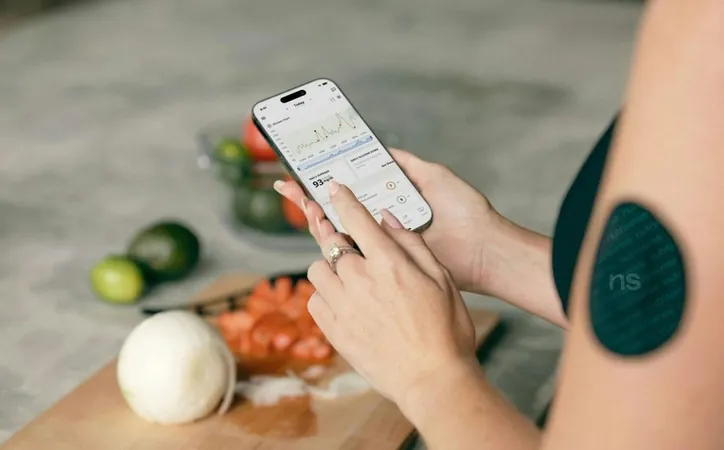
Revolutionizing Diabetes Care: The Rise of Patch Monitors for Seamless Blood Sugar Management
2024-11-15
Author: Nur
What Exactly Are Diabetes Patches?
Diabetes patches, often known as continuous glucose monitors (CGMs), are small adhesive devices that users wear on their skin, typically on the arm. Unlike traditional devices that require frequent finger pricks, these patches offer a non-invasive solution—an impressive feat for those juggling diabetes in their day-to-day lives. Equipped with advanced sensors, these patches provide real-time insights into glucose levels, empowering users to actively manage their condition without disrupting their daily activities.
How Do They Work?
The technology behind these patches is both simple and effective. A tiny sensor is placed just beneath the skin, measuring glucose levels in the fluid surrounding the cells. This information is then wirelessly relayed to a smartphone app, giving users easy access to their glucose trends and alerts for any dangerous spikes or dips in their blood sugar levels. The convenience of having access to this critical data at their fingertips allows users to make more informed decisions about their health, including adjustments to their diet and insulin intake.
The Advantage Over Traditional Glucometers
One of the most significant benefits of diabetes patches lies in their non-invasive nature. Unlike conventional glucometers that require users to draw blood multiple times a day, these patches eliminate the need for painful finger pricks. This continuous monitoring not only enhances user comfort but also promotes better adherence to glucose tracking, ultimately leading to improved health outcomes.
The Growing Popularity of Diabetes Patches
The surge in the popularity of diabetes patches can be attributed to their ease of use and advanced features. They offer immediate feedback, allowing users to make timely lifestyle adjustments. Additionally, their compatibility with smartphone applications appeals to a generation of tech-savvy individuals who seek convenient health solutions. Moreover, the data-driven nature of these monitors means that users receive real-time alerts and insights, helping them to avoid dangerous low or high blood sugar levels. These patches allow healthcare providers to tailor their recommendations more effectively, translating to a more personalized approach to diabetes management. However, the price tag might be a barrier for some. In Malaysia, these patches can cost around RM259 each and are designed to be worn for up to 14 days. In comparison, traditional glucometer strips and lancets are more affordable yet require ongoing purchases, potentially adding to long-term costs.
A Critical Need for Improved Diabetes Management in Malaysia
The urgency for effective diabetes management tools is particularly relevant in Malaysia, where an alarming 15.6% of adults live with diabetes, according to the National Health and Morbidity Survey Report 2023. A staggering 84% of diagnosed adults aged 18-29 are unaware of their condition, highlighting a severe disconnect in diagnosis and treatment accessibility. Moreover, it's concerning that only two out of five individuals with diabetes possess a glucometer at home, reflecting a substantial gap in essential diabetes monitoring tools. Furthermore, with 56% of those diagnosed failing to maintain proper blood sugar control, the introduction of more accessible and user-friendly technologies, such as diabetes patches, could be instrumental in shifting this trend.
Conclusion: A Step Forward in Diabetes Care
As the healthcare landscape continues to evolve, devices like diabetes patch monitors are at the forefront, promising a more efficient and user-friendly approach to managing diabetes. With their ability to provide continuous, real-time glucose monitoring, they represent hope for better health management and overall quality of life for millions suffering from this chronic condition. The future of diabetes management is undeniably bright with such innovations at our fingertips—literally.



 Brasil (PT)
Brasil (PT)
 Canada (EN)
Canada (EN)
 Chile (ES)
Chile (ES)
 España (ES)
España (ES)
 France (FR)
France (FR)
 Hong Kong (EN)
Hong Kong (EN)
 Italia (IT)
Italia (IT)
 日本 (JA)
日本 (JA)
 Magyarország (HU)
Magyarország (HU)
 Norge (NO)
Norge (NO)
 Polska (PL)
Polska (PL)
 Schweiz (DE)
Schweiz (DE)
 Singapore (EN)
Singapore (EN)
 Sverige (SV)
Sverige (SV)
 Suomi (FI)
Suomi (FI)
 Türkiye (TR)
Türkiye (TR)